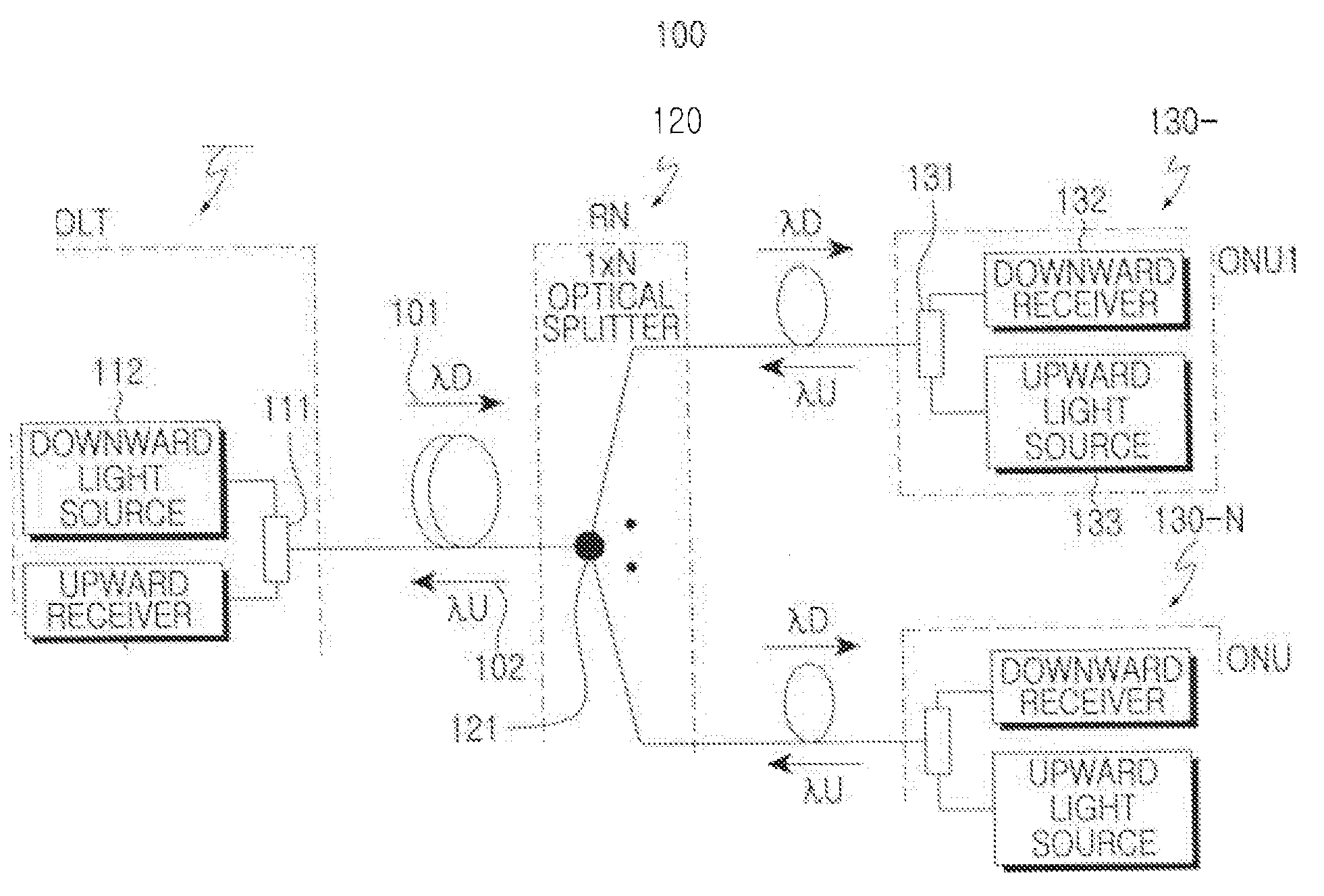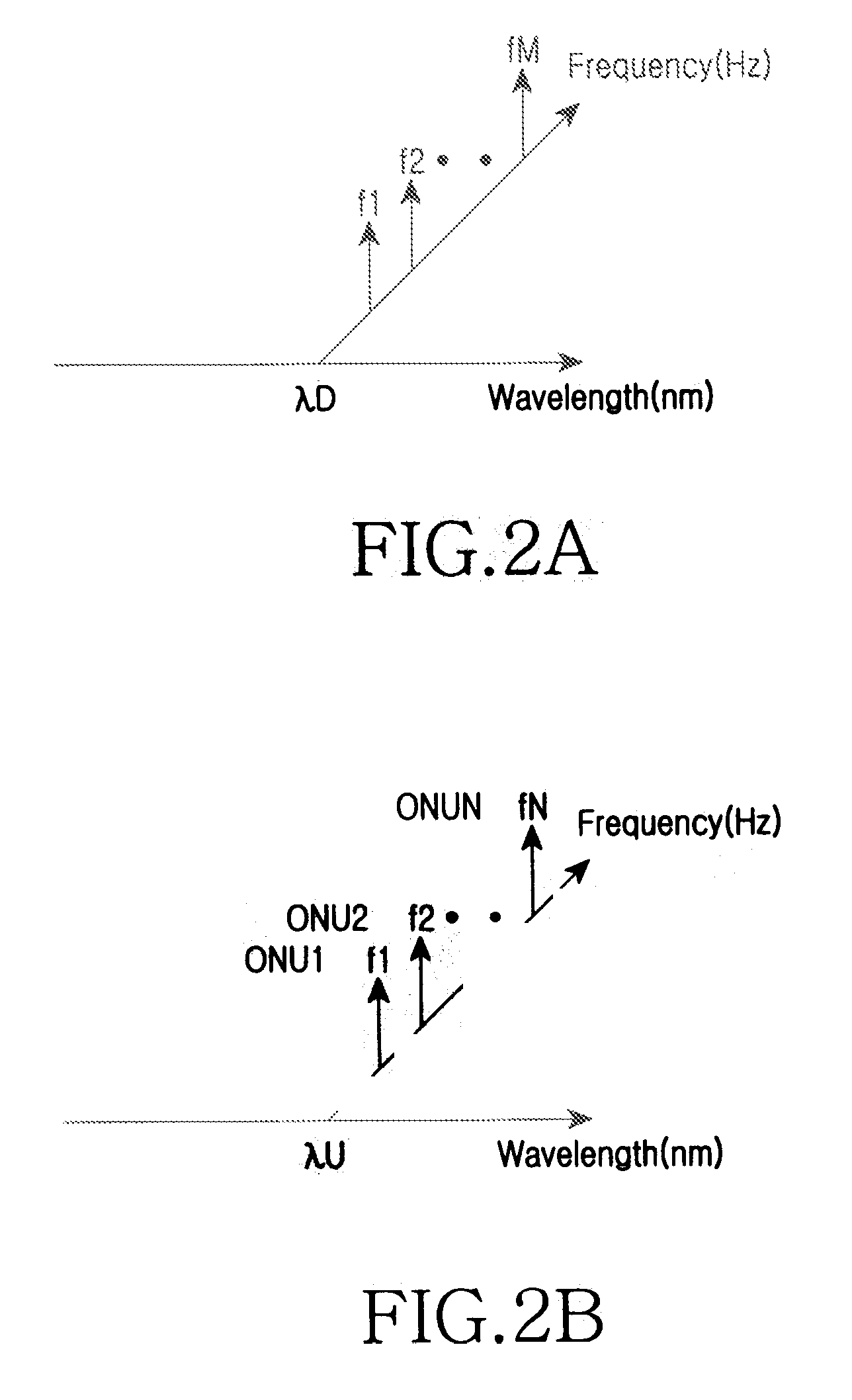Subcarrier multiplexing type optical communication method and passive optical network using the same
a passive optical network and multiplexing technology, applied in multiplex communication, fiber transmission, electrical equipment, etc., can solve the problems of increasing the installation and maintenance cost of the network, affecting the performance of the network, so as to minimize the interference of optical beats
- Summary
- Abstract
- Description
- Claims
- Application Information
AI Technical Summary
Benefits of technology
Problems solved by technology
Method used
Image
Examples
first embodiment
[0054]FIG. 3 shows a subcarrier multiplexing type passive optical network according to the present invention. Referring to FIG. 3, the passive optical network 200 includes an optical line terminal 210 for detecting data from a plurality of upstream subcarrier channels and creating a downstream optical signal consisting of downstream subcarrier channels having respective proper frequencies, a plurality of optical network units 230-1 to 230-N for detecting data from the downstream subcarrier channels having respective frequencies allocated thereto and creating upstream subcarrier channels, and a remote node (splitter) 220 positioned between the optical network units 230-1 to 230-N and the optical line terminal 210.
[0055]The optical line terminal 210 includes a light creation unit 240 for creating a single wavelength of downstream optical signal loaded with a plurality of downstream subcarrier channels having respective proper frequencies, a light source 214, an optical coupler 213, an...
second embodiment
[0064]FIG. 7 shows the construction of a passive optical network according to the present invention. The passive optical network 500 according to the present embodiment includes an optical line terminal 510 for creating multiplexed downstream optical signals having different wavelengths and detecting data from multiplexed upstream optical signals, a plurality of optical network units 560-1 to 560-N for detecting data from a downstream subcarrier channel having a corresponding frequency and creating an upstream subcarrier channel having a corresponding frequency, and remote nodes 540, 550-1 to 550-N positioned between the optical network units 560-1 to 560-N and the optical line network 510.
[0065]The optical line terminal 510 includes a plurality of light sources 522- to 522-N for creating downstream optical signals having different wavelengths, which consist of a plurality of downstream subcarrier channels having different frequencies, a multiplexer 521 for multiplexing the downstre...
PUM
 Login to View More
Login to View More Abstract
Description
Claims
Application Information
 Login to View More
Login to View More - R&D
- Intellectual Property
- Life Sciences
- Materials
- Tech Scout
- Unparalleled Data Quality
- Higher Quality Content
- 60% Fewer Hallucinations
Browse by: Latest US Patents, China's latest patents, Technical Efficacy Thesaurus, Application Domain, Technology Topic, Popular Technical Reports.
© 2025 PatSnap. All rights reserved.Legal|Privacy policy|Modern Slavery Act Transparency Statement|Sitemap|About US| Contact US: help@patsnap.com



